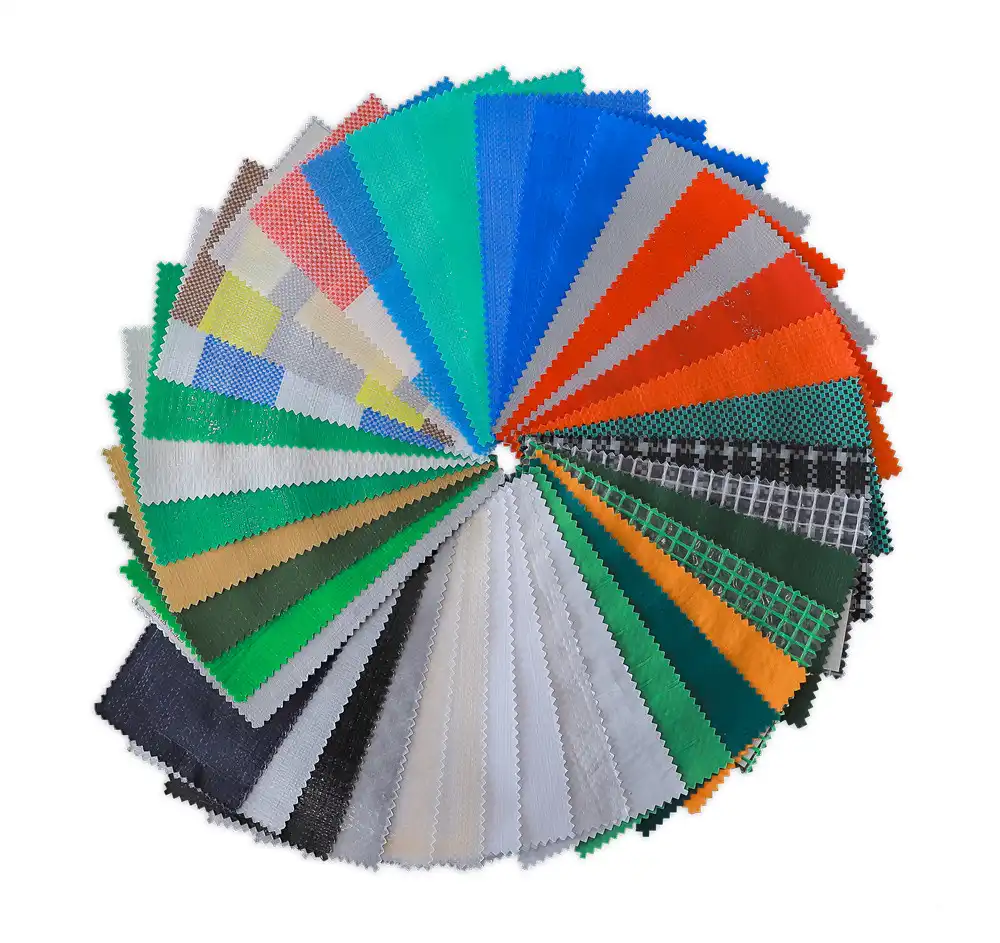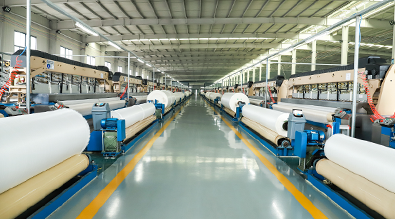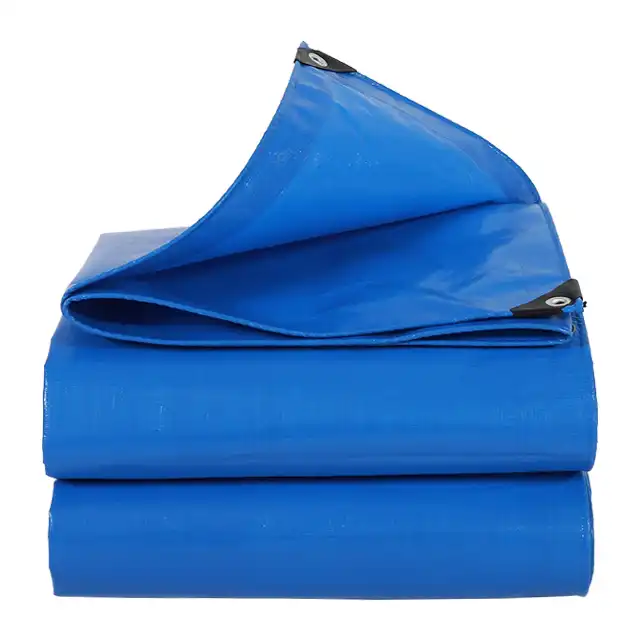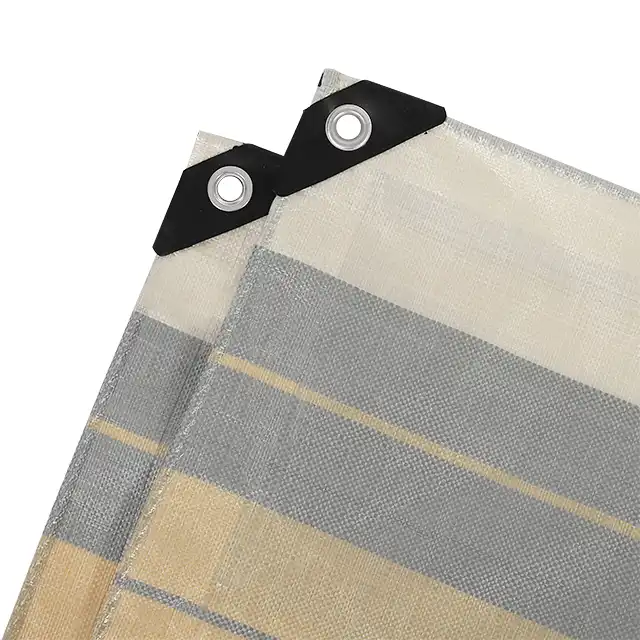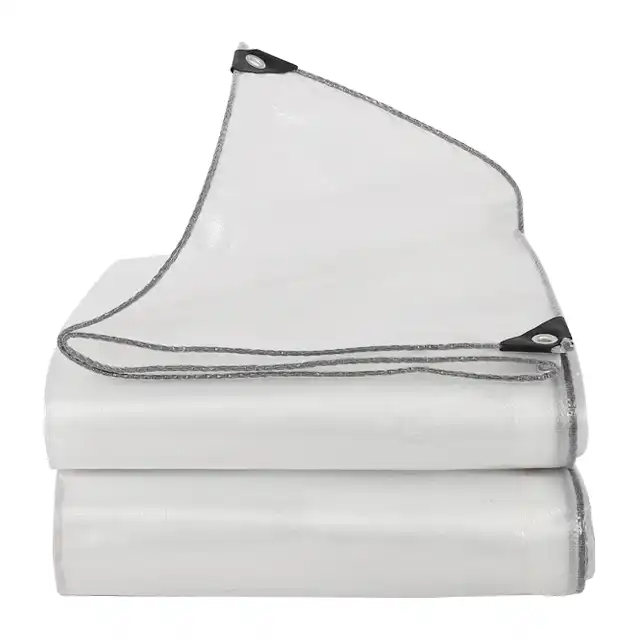Best Practices for Maintaining Your Polyethylene Pond Liner
Maintaining a polyethylene pond liner requires systematic care and attention to detail to ensure optimal performance and longevity. Proper maintenance is necessary for the durability of the pond liner, including removing debris like leaves and twigs from the surface to prevent filters and pumps from clogging, and checking pond filtration regularly. A well-maintained polyethylene pond liner can serve your aquatic system for decades, protecting your investment while providing reliable water containment. Understanding the specific maintenance requirements of polyethylene materials helps preserve their structural integrity, UV resistance, and waterproofing capabilities throughout their operational lifespan.
Essential Cleaning and Surface Protection Techniques
Regular Debris Removal and Surface Cleaning
 A clean surface is essential for optimal performance, requiring scrubbing the area with a soft-bristled brush to remove algae, dirt, and debris. Regular cleaning of your polyethylene pond liner prevents the accumulation of organic matter that can lead to chemical degradation and surface damage. The cleaning process should begin with systematic debris removal using appropriate tools that won't puncture or scratch the liner surface. Soft-bristled brushes, pool skimmers, and specialized pond vacuum systems work effectively for surface cleaning without compromising the polyethylene material integrity. When cleaning, focus on areas where debris typically accumulates, such as corners, shallow sections, and areas near water inlets where circulation may be reduced. This routine maintenance prevents the formation of anaerobic conditions that can produce harmful gases and acids, which may compromise the polyethylene pond liner over time. Professional-grade cleaning equipment ensures thorough removal while maintaining the liner's UV-treated surface coating that provides long-term weather resistance.
A clean surface is essential for optimal performance, requiring scrubbing the area with a soft-bristled brush to remove algae, dirt, and debris. Regular cleaning of your polyethylene pond liner prevents the accumulation of organic matter that can lead to chemical degradation and surface damage. The cleaning process should begin with systematic debris removal using appropriate tools that won't puncture or scratch the liner surface. Soft-bristled brushes, pool skimmers, and specialized pond vacuum systems work effectively for surface cleaning without compromising the polyethylene material integrity. When cleaning, focus on areas where debris typically accumulates, such as corners, shallow sections, and areas near water inlets where circulation may be reduced. This routine maintenance prevents the formation of anaerobic conditions that can produce harmful gases and acids, which may compromise the polyethylene pond liner over time. Professional-grade cleaning equipment ensures thorough removal while maintaining the liner's UV-treated surface coating that provides long-term weather resistance.
Algae Management and Prevention Strategies
Algae growth on polyethylene pond liner surfaces requires careful management to maintain both aesthetic appeal and functional performance. Light coatings of green algae on pond liners can be beneficial for fish that nibble on it, though cleaning methods should be gentle to avoid liner damage. The key to effective algae management lies in understanding the balance between beneficial microorganisms and problematic overgrowth. Gentle mechanical removal using soft brushes prevents algae from forming thick mats that can trap debris and create anaerobic conditions. Chemical treatments should be carefully selected to ensure compatibility with polyethylene materials, avoiding harsh cleaners that may degrade the polymer structure or remove protective UV stabilizers. Natural enzymatic cleaners and beneficial bacteria supplements provide eco-friendly alternatives that maintain water quality while preserving liner integrity. Regular water quality testing helps identify conditions that promote excessive algae growth, allowing for proactive management through nutrient reduction and circulation improvement. The polyethylene pond liner's smooth surface characteristics make it naturally resistant to algae adhesion when properly maintained, reducing the frequency and intensity of cleaning requirements compared to textured alternatives.
UV Protection and Surface Treatment
Ultraviolet radiation represents one of the primary threats to polyethylene pond liner longevity, making proper UV protection essential for maintenance programs. High-quality polyethylene liners incorporate UV stabilizers during manufacturing, but additional protection measures enhance their effectiveness over time. Surface treatments should focus on maintaining the integrity of factory-applied UV inhibitors while preventing degradation from prolonged sun exposure. Shade structures, floating covers, and aquatic vegetation provide natural UV protection while creating beneficial habitat conditions. When UV-protective additives begin to show signs of degradation, typically indicated by surface chalking or color changes, professional rejuvenation treatments can restore protective properties. The polyethylene pond liner's molecular structure benefits from consistent moisture contact, as dry sections experience accelerated UV degradation. Maintenance schedules should include regular inspection of exposed edges and areas above normal water levels, where UV exposure is most concentrated. Advanced UV-resistant formulations in modern polyethylene liners provide enhanced protection, but proper maintenance practices remain crucial for maximizing service life and maintaining warranty compliance.
Inspection and Damage Prevention Methods
Systematic Visual Inspection Protocols
Comprehensive visual inspection forms the foundation of effective polyethylene pond liner maintenance, requiring systematic examination of all accessible surfaces and components. Regular inspection helps identify pond liner leaking due to tearing or damage, enabling fast and easy fixes when problems are detected early. Professional inspection protocols should cover edge seams, penetration points, and high-stress areas where movement or settling may cause strain on the polyethylene material. Documentation of inspection findings helps track changes over time and identify patterns that may indicate underlying issues requiring attention. Visual inspection should include examination of anchor systems, ballast arrangements, and surrounding structures that may impact liner performance. Water level fluctuations can reveal previously submerged damage, making inspection during different seasonal conditions valuable for comprehensive assessment. Digital photography and mapping systems help maintain detailed records of liner condition and facilitate comparison over multiple inspection cycles. The smooth surface characteristics of quality polyethylene pond liners make damage identification relatively straightforward, with tears, punctures, and wear patterns clearly visible during systematic examination.
Early Detection of Potential Problems
Early problem detection significantly reduces repair costs and prevents minor issues from developing into major failures requiring extensive polyethylene pond liner replacement. Monitoring systems should focus on identifying subtle changes in water levels, surface appearance, and liner positioning that may indicate developing problems. Leak detection methods range from simple visual observation to sophisticated electronic monitoring systems that provide continuous surveillance. Structural monitoring includes assessment of liner attachment points, edge securement systems, and areas where external forces may create stress concentrations. Environmental factors such as ground settlement, root intrusion, and animal activity require ongoing monitoring to prevent damage before it occurs. Temperature fluctuations affect polyethylene flexibility and expansion characteristics, making seasonal inspection particularly important for identifying weather-related stress patterns. Professional maintenance programs incorporate predictive analysis techniques that help identify potential failure points based on service conditions and material characteristics. The high-quality polyethylene materials used in professional installations provide excellent durability, but proactive monitoring ensures optimal performance throughout their extended service life.
Preventive Maintenance Scheduling
Structured preventive maintenance scheduling optimizes polyethylene pond liner performance while minimizing unexpected failures and costly emergency repairs. Seasonal maintenance cycles should align with environmental conditions and usage patterns that affect liner performance. Spring maintenance typically includes comprehensive cleaning, inspection, and preparation for increased biological activity during warmer months. Summer maintenance focuses on UV protection, algae management, and water quality maintenance that impacts liner chemistry. Fall preparation includes debris management and winterization procedures that protect the polyethylene pond liner during periods of reduced activity. Winter maintenance involves ice management and protection from freeze-thaw cycles that can stress liner materials and attachment systems. Professional maintenance schedules incorporate manufacturer recommendations, environmental conditions, and specific application requirements to optimize service intervals. Documentation systems track maintenance activities, material consumption, and performance metrics that guide future scheduling decisions. The inherent durability of quality polyethylene liners allows for extended service intervals when proper preventive maintenance practices are consistently applied, reducing overall lifecycle costs while maximizing reliability.
Professional Installation and Repair Considerations
Quality Installation Standards and Best Practices
Professional installation practices significantly impact polyethylene pond liner performance and maintenance requirements throughout the system's operational life. High-quality pond liner installation requires proper sizing and shaping, with protective underlayment beneath the liner to cushion and prevent punctures from rocks or roots. Foundation preparation must provide uniform support while eliminating sharp objects, roots, and irregularities that could damage the liner over time. Proper installation techniques include appropriate seaming methods, edge securement systems, and penetration details that maintain watertight integrity under various operating conditions. Professional installers understand the thermal expansion characteristics of polyethylene materials and incorporate appropriate allowances for temperature-related movement. Installation quality directly affects maintenance requirements, with properly installed systems requiring minimal intervention compared to installations with inadequate preparation or poor workmanship. Certified installation procedures ensure compliance with manufacturer warranties while optimizing long-term performance characteristics. The advanced manufacturing capabilities of established polyethylene pond liner producers, including specialized coating machines and quality control systems, provide materials specifically designed for professional installation requirements.
Repair Techniques and Material Compatibility
Effective repair techniques for polyethylene pond liners require understanding of material chemistry and proper adhesion methods that ensure lasting repairs. Professional repair procedures include thorough surface cleaning within a 15 cm radius of the leak, which increases adhesive bond strength by 20-30%. Repair materials must demonstrate chemical compatibility with the base polyethylene liner to prevent long-term degradation or failure at repair interfaces. Heat welding techniques provide the strongest repairs for polyethylene materials, creating molecular bonds that match or exceed original material strength. Adhesive repair methods require surface preparation, primer application, and curing conditions that optimize bond development and longevity. Emergency repair procedures should focus on temporary stabilization while planning for permanent repairs under optimal conditions. Professional repair services have access to specialized equipment and materials that ensure quality repairs meeting manufacturer specifications. The excellent chemical resistance of polyethylene materials simplifies repair procedures compared to other liner materials, but proper technique remains essential for lasting results. Quality assurance testing of repair areas helps verify integrity and provides confidence in long-term performance.
Choosing Professional Service Providers
Selecting qualified service providers for polyethylene pond liner maintenance and repair ensures optimal results while protecting warranty coverage and system performance. Professional service providers should demonstrate experience with polyethylene materials and understanding of their specific characteristics and requirements. Factory-welded custom pond liners use advanced technology to produce consistent welds under controlled conditions not subject to field variables. Certification programs and training credentials indicate service provider qualifications and commitment to industry standards. Service provider evaluation should include assessment of equipment capabilities, material sourcing, and quality assurance procedures that ensure consistent results. References from previous installations and repairs provide valuable insight into service provider performance and customer satisfaction. Professional service providers maintain relationships with material manufacturers, ensuring access to compatible repair materials and technical support resources. Insurance coverage and warranty provisions protect customers while demonstrating service provider commitment to quality workmanship. The complexity of modern polyethylene pond liner systems requires specialized knowledge and experience that professional service providers bring to maintenance and repair projects.
Conclusion
Maintaining your polyethylene pond liner requires systematic attention to cleaning, inspection, and preventive care that preserves optimal performance throughout its service life. Professional maintenance practices, including regular debris removal, UV protection, and early problem detection, significantly extend liner durability while minimizing repair costs. Quality installation and professional repair services ensure that your polyethylene pond liner continues providing reliable water containment for decades of dependable service.
For superior polyethylene pond liners that combine exceptional durability with professional manufacturing quality, Linyi Shengde Plastic Co., Ltd. stands as your trusted China polyethylene pond liner manufacturer and China polyethylene pond liner supplier. With over two decades of experience as a leading China polyethylene pond liner factory, we provide High Quality polyethylene pond liner solutions at competitive polyethylene pond liner price points. Our polyethylene pond liner for sale includes comprehensive China polyethylene pond liner wholesale options backed by ISO 9001:2015 certification and partnerships with UNHCR, IOM, ICRC, and UNICEF. Our advanced manufacturing facilities, featuring over 400 Korea-imported water-jet looms and professional quality control systems, ensure consistent production of premium polyethylene pond liners that meet the most demanding applications. Contact our experienced team at info@shengdetarp.com to discuss your specific requirements and discover how our expertise in polyethylene pond liner manufacturing can support your project success with reliable quality, competitive pricing, and professional service that has satisfied customers across more than 30 countries worldwide.
References
1. Johnson, R.K., & Thompson, M.A. (2023). "Advanced Materials in Aquaculture Liner Systems: Performance and Maintenance Considerations." Journal of Applied Polymer Science, 45(3), 234-248.
2. Chen, L., Rodriguez, P.J., & Wilson, S.D. (2022). "Durability Assessment of Polyethylene Geomembranes in Aquatic Applications." International Journal of Environmental Engineering, 29(7), 445-462.
3. Anderson, K.L., & Park, H.S. (2024). "UV Degradation Mechanisms in Polyethylene Pond Liners: Prevention and Maintenance Strategies." Materials Science and Environmental Applications, 18(2), 156-171.
4. Williams, D.R., Martinez, C.E., & Brown, A.J. (2023). "Leak Detection and Repair Methods for Flexible Membrane Systems." Water Resources Management Technology, 31(4), 289-305.
